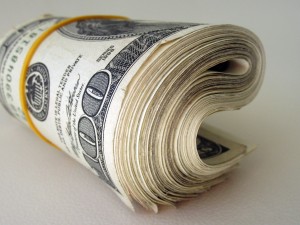On average, white women earn 81 percent of what white men make. At first glance it may appear that there is more gender equality among minority men and women than among whites. Hispanic or Latina women make 88 percent of what Latinos do and African American women make 90 percent of what their male counterparts make.
But when we add race to gender, these pay gaps become a veritable chasm. African American women earn 36 percent less than white men and Latinas a mere 45 percent. Interestingly, the gap between the earnings of Asian women and white men is smaller, just 12 percent, but that mounts up over a lifetime, and Asian American women earn just 73 percent of what Asian American men make.

Men lost jobs especially rapidly during the first phases of the Great Recession, but the ripple effects have led to lays offs of hundreds of thousands of state and local government workers, about 70 percent of whom were women and 20 percent of whom were African Americans.
And things are not likely to get better for women as the economy continues to pick up speed. While the majority of jobs lost in the recession were mid-range jobs, the majority of new jobs that have been created in the recovery are low-wage. Many of the occupations with the largest projected job growth are minority and female-dominated, but they are jobs such as home health aides and personal care aides, with earnings of only about 20,000 dollars per year.
Today, in spite of increasing educational gains, women of color are especially likely to work in minimum-wage jobs, where even a full-time, year-round worker will earn just 14,500 dollars a year, scarcely enough to keep one person – let alone a family – afloat. In 2011, nearly 360,000 black and Latina women were paid hourly rates that were less than the minimum wage. Since Social Security benefits are based upon an individual’s lifetime earnings, these low wages hurt women well into retirement, leaving many elderly women in poverty or on the brink.
Because gender, racial, and ethnic wage gaps are caused by multiple factors, multiple strategies are needed to ensure equity. Legislation like the Lilly Ledbetter Fair Pay Act was an important first step, but additional policies like the Paycheck Fairness Act, the Healthy Families Act, paid family and medical leave legislation, and raising the minimum wage would also go a long way in helping to combat the problem.
—–
This piece was part of the Council on Contemporary Families Equal Pay Act 50th Anniversary Symposium, June 2013.

Comments 5
Corey Remle — February 5, 2015
The links to the aauw report don't work properly.
John — February 5, 2015
Your sources are 404ing.
Also don't omit the gender gap between white men and Asian men just because it doesn't fit into your rhetoric. It makes your argument weak.
Wang — February 6, 2015
One comparison missing from this very informative article is comparison between black and white employed women.
I came across a 2008 graph produced by Steven Ruggles (analyzed by Nathan Marwell). There, I saw almost equality in the ratio of black/white wage for women. The same can NOT be said for black men. (The article is titled: " Wage Disparities and Industry Segregation: A Look at Black-White Income Inequality from 1950-2000. If you google the title, you will be able to find it.)
Just curious if anyone has any thoughts or reactions on this.